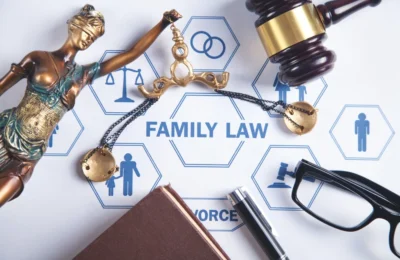Divorce is a complex and emotional journey, and the question of primary custody can be one of the most challenging hurdles to overcome. Navigating the legal process requires not only understanding your rights but also an unwavering commitment to the well-being of your children.
Achieving primary custody is about providing stability and continuity for them. This article aims to guide you through the legal maze with practical advice and insight into securing primary custody.
Let’s demystify the process together. Read on!
Understanding Primary Custody
One parent has the legal duty and right to be the main caretaker of the child. This is called primary custody. It means making big choices about the child’s health, education, and religion, among other things. The first thing you need to do to get ready for this part of a divorce is to learn what primary custody means.
The Best Interest of the Child
Today, courts care a lot about what is best for the child when making decisions. When the court makes its decision, things like the child’s age, the parent’s ability to provide, and emotional ties all play a big part. For parents, it’s important to show that they can meet their child’s needs well.
Starting the Custody Process
One or both parents must file a petition for legal custody for the primary custody process to begin. It’s important to know the laws in your state and whether joint custody is considered to be in the best interest of the child. This can change the process.
Legal Representation
To help you through the complicated process of getting custody, it is strongly suggested that you hire divorce lawyers who specialize in family law. Their job is to help you make decisions that are best for your child and protect your parental rights.
Developing a Parenting Plan
Parents are often asked to make a parenting plan that spells out custody and visitation schedules before or during the legal process. A well-thought-out plan can have a big effect on how the court decides who gets primary custody.
Custody Evaluation
There are times when the court will order a custody evaluation to get an outside opinion on the family situation. This process includes meetings, home visits, and advice on custody from a third party who is not involved in the case.
Mediation and Negotiation
Mediation and negotiation are two other ways to settle disagreements that are meant to make custody disputes amicable. During mediation, a neutral third party helps both sides come to an agreement that works for everyone. Divorced parents can directly talk about and work out their differences in custody and visitation through negotiation.
The Custody Hearing
At the custody hearing, both parents make their cases to the judge, which is a very important step. The testimony and paperwork that backs up each parent’s claims are carefully looked over. What the judge decides will depend on what they think is best for the child.
Securing Primary Custody The Path Forward
Securing custody arrangements often marks a new chapter for both the parents and children involved. Focusing on the welfare of the children should always be at the heart of primary parent cases.
Obtaining primary custody is a journey that may require patience and resilience. Once achieved, the primary parent allows for a stable and loving environment for the child to thrive. Remember, the path to primary custody is navigated with the child’s future as the guiding star.
Did you like this guide? Please browse our website for more!










